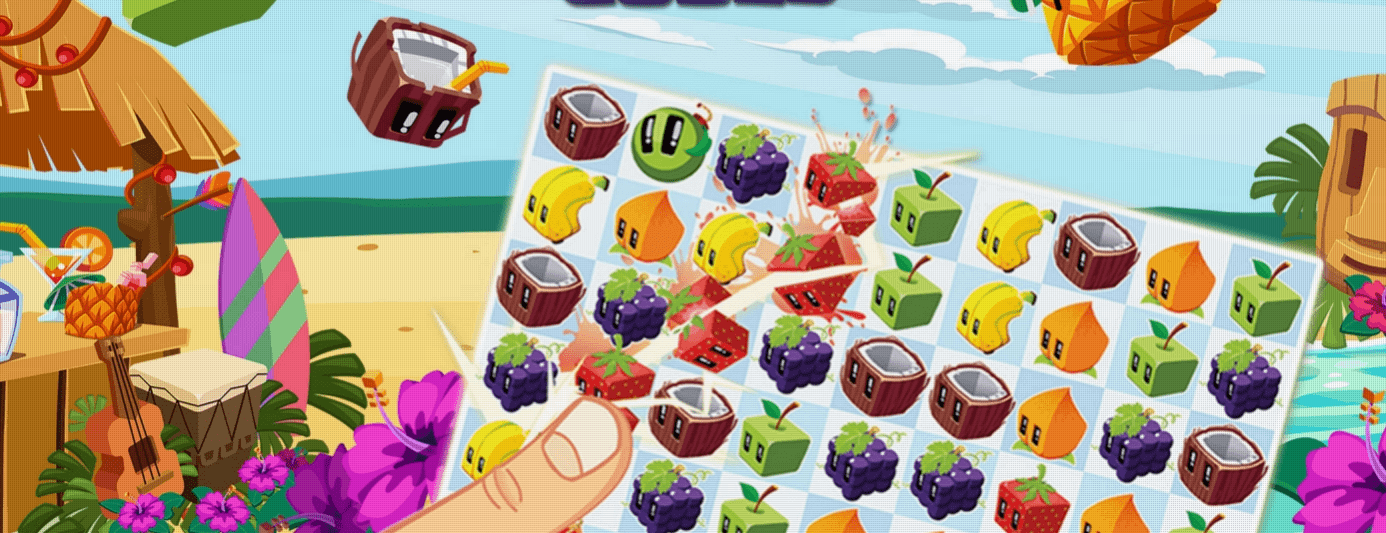Gaming firm, Playlab speeds data to insights by up to 300%
Playlab, headquartered in Hong Kong, is well known for hit game titles like Juice Cubes and Jungle Cubes.
With more than 25 million downloads and managed a daily active user base of more than 2 million, the team at Playlab has a great deal of data they could analyze to enhance game play.
“We did not want to spend time to develop our own data visualization tool,” said Thomas Andreasen Chief Growth Officer (CGO) and co-founder of Playlab Games.
The Playlab team now uses Tableau regularly to analyze and visualize over 10 million records daily. They can quickly gain insights into gaming behavior, track moves, and monitor purchases and payment—all of which allows the team to improve designs and plan game levels.

There is a huge time saving for us since using Tableau. In the past, the process on how we analyze data was extremely manual, but now, a large part of the process is automated.
Getting into the game
Playlab employs more than 100 people and also has production teams in Bangkok and Manila. Additionally, the company has an office in Singapore that handles game distribution.
Playlab mobile games are so popular that there were more than 2 million active users accessing the games on a daily basis. The company has been actively collecting and analyzing a large amount of data using third-party analytics solutions.
Playlab was tracking metrics including: how long users take to progress to a certain level, the number of moves left before the completion of a certain level, the average score users receive when they fail to complete a level, as well as in-game purchases and payments.
At first, the Playlab team was pulling CSV files and extracting insights from spreadsheets. This process usually took a couple of days and it was difficult to get the full perspective surrounding their data.
The team soon found that they were not able to get the information that they desired. The third-party analytics tools they were using, including Flurry Analytics, did not provide them with data visualization. They also wanted to look at the data from different angles, which was not possible on a spreadsheet.
The team considered building its own data visualization tool, but Playlab Chief Growth Officer (CGO) Thomas Andreasen wanted his team to focus on designing and developing quality games.
A primary consideration was finding a solution that could handle not only today’s data deluge, but also could scale enough to manage future growth.
Understanding the data
“We went on the Internet searching for data visualization solutions and came across QlikView and Tableau among others,” said Andreasen.
“We then decided to go with Tableau because it fits our requirements better. We also have staff who have had some experience with Tableau,” he added.
Currently, the Playlab team regularly pulls data stored in Google BigQuery and PostgreSQL databases. There are also data stored as JSON and CSV files. They still use Flurry to pull the data from the different sources, then feed everything into Tableau to come up with easy-to-understand visualizations. On any given day, they could be analyzing over 10 million individual records.
Furthermore, Playlab is exploring the use of Tableau beyond analyzing gameplay and enhancing the gaming experience. Staff in the Finance department, for instance, has also started to experiment with the software to analyze sales data.
Up to 300% time savings
Andreasen estimates that the Playlab team has been benefitting from time savings of 200 to 300 percent since deploying Tableau.
“How we worked with data was extremely manual before Tableau,” Andresen commented. “Just getting some information from the data then could take as long as 48 hours compared to about half an hour now with Tableau.”
“Tableau is a very easy to use visualization tool with drag and drop functions. You can visualize data in so many ways. This is especially useful in our game design as the charts can reveal if something is wrong in a split second, whereas in the past, we would have to look into the data of each level in a granular fashion to find errors and correct them,” he said.
With Tableau, Playlab is making it easier for its game designers to make correct evaluations on how to adapt and balance the game design by referring to insights gained from the data visualizations.

Players navigate colorful levels in Playlab's popular game, Juice Cubes.
Beyond game design
Andreasen is pleased that the team found Tableau as it enables his staff to continue focusing on their primary efforts—game design and improvement—while enjoying access to data visualization to help them in the work.
When asked what advice he has for organizations sourcing for a data analytics or visualization tool, Andreasen said it is important for them to be aware of how much their data might grow in the long run. He stressed that it is important that people work with analytics tools that can cope with a significantly larger amount of data, as their needs will likely evolve as their businesses grow.